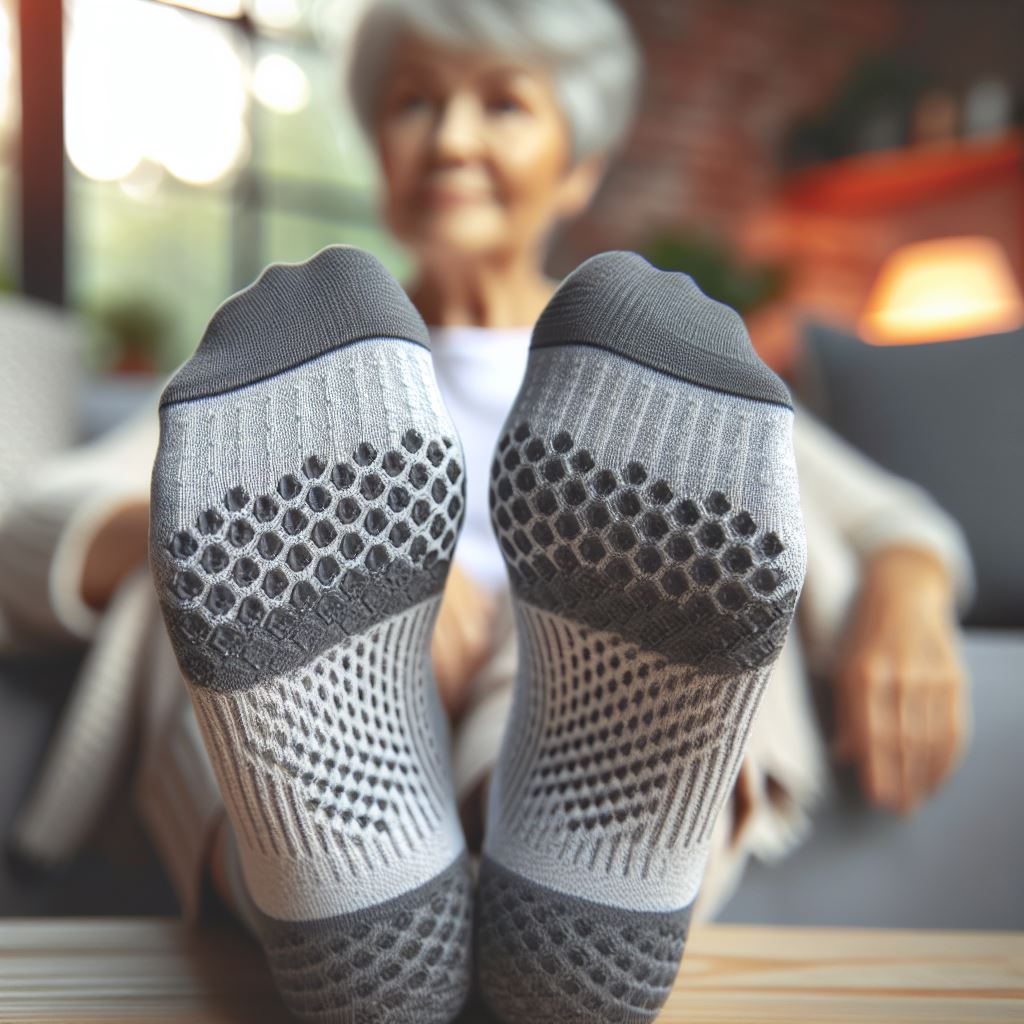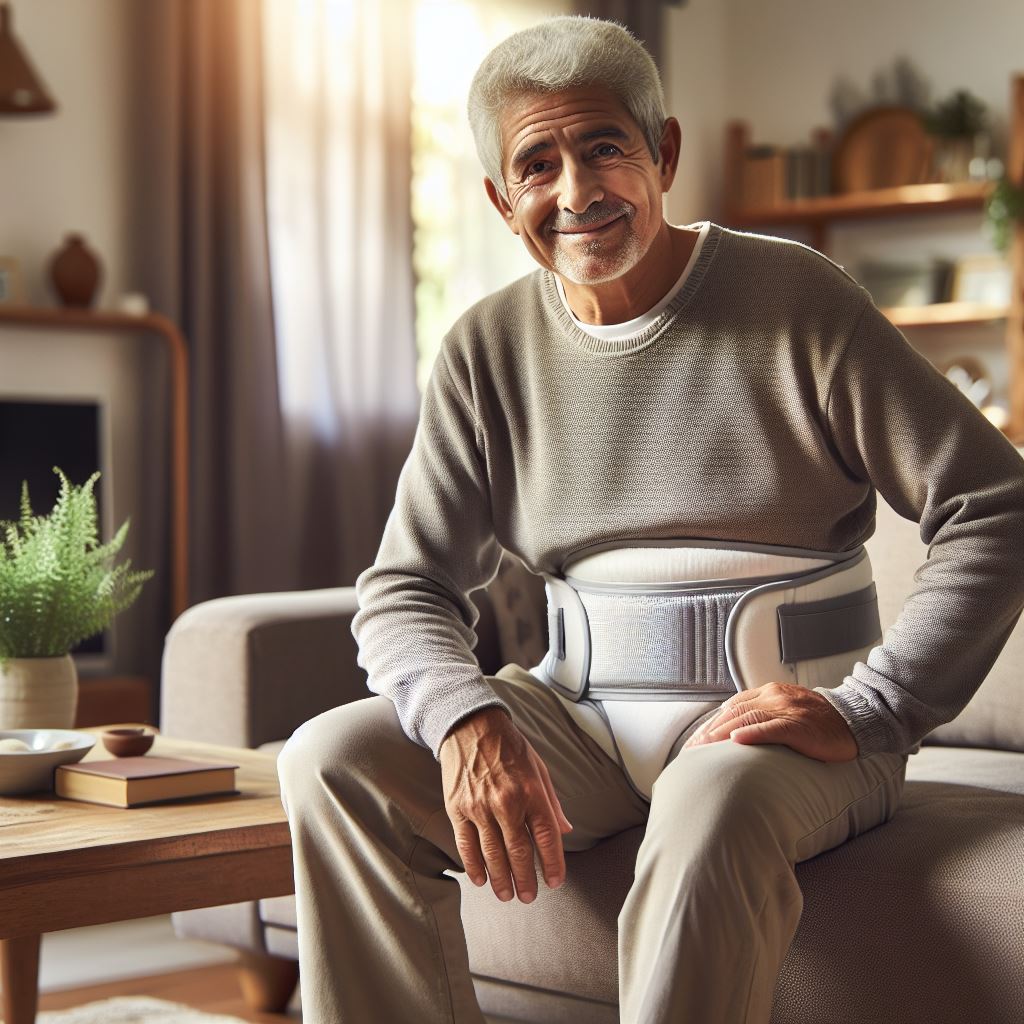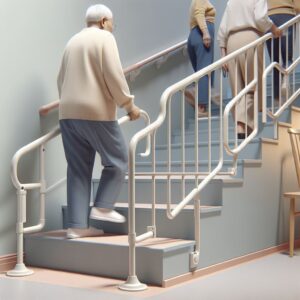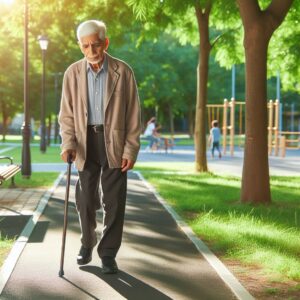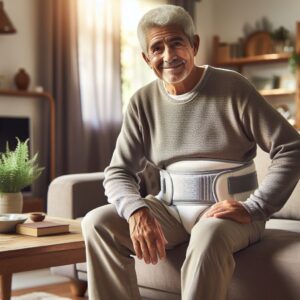Falls are a significant concern for the elderly, often leading to serious injuries and a decline in overall health. One simple yet effective solution to help prevent falls is the use of non-slip socks. These specially designed socks provide better grip and stability, reducing the risk of slipping and falling. In this article, we will explore the importance of fall prevention, the benefits of non-slip socks, and additional strategies to keep our elderly loved ones safe.
The Importance of Fall Prevention in the Elderly
The Impact of Falls
Falls can have devastating consequences for older adults, including fractures, head injuries, and a loss of independence. The physical injuries sustained from falls can lead to prolonged hospital stays, rehabilitation, and in some cases, permanent disability. Beyond the physical impact, falls can also affect the mental and emotional well-being of the elderly. The fear of falling again can lead to reduced activity levels, social isolation, and a decrease in overall quality of life.
Statistics on Elderly Falls
- Prevalence: According to the CDC, one in four Americans aged 65+ falls each year. This statistic underscores the widespread nature of the issue and the need for effective preventive measures.
- Consequences: Falls are the leading cause of fatal and non-fatal injuries among older adults. In 2020, over 36,000 older adults died as a result of falls, and millions more were treated in emergency departments for fall-related injuries.
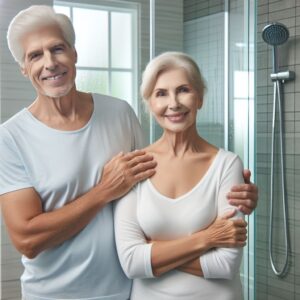
Economic Impact
The economic burden of falls is substantial. Medical costs associated with fall injuries are estimated to be over $50 billion annually in the United States. These costs include hospitalizations, emergency room visits, and long-term care. By investing in fall prevention strategies, including non-slip socks, we can potentially reduce these costs and improve the quality of life for the elderly.
Understanding Non-Slip Socks
What Are Non-Slip Socks?
Non-slip socks are designed with rubberized or textured soles that provide extra grip on smooth surfaces. They are often made from comfortable, breathable materials suitable for daily wear. These socks come in various styles, including ankle-length, crew-length, and knee-high, to cater to different preferences and needs.
How Do They Work?
The grip provided by non-slip socks helps to stabilize the wearer, reducing the likelihood of slipping on surfaces such as hardwood floors, tiles, and other potentially slippery areas. The textured soles create friction between the sock and the floor, enhancing stability and balance. This simple yet effective design can make a significant difference in preventing falls.
Types of Non-Slip Socks
There are several types of non-slip socks available, each with unique features:
- Hospital Socks: Often used in medical settings, these socks have a strong grip and are designed for patients who may be at risk of falling.
- Everyday Non-Slip Socks: Suitable for daily wear at home, these socks offer comfort and safety without compromising style.
- Therapeutic Socks: Designed for individuals undergoing physical therapy, these socks provide additional support and stability during exercises.
Benefits of Non-Slip Socks for the Elderly
Enhanced Safety
Non-slip socks significantly reduce the risk of falls by providing better traction. This is especially important for elderly individuals who may have balance issues or weakened muscles. The added grip can help them feel more secure when walking, standing, or moving around their home.
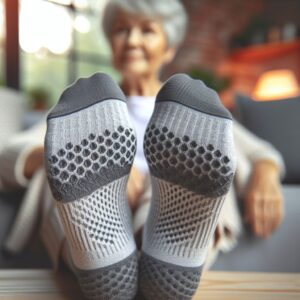
Comfort and Convenience
Unlike traditional slippers, non-slip socks are lightweight and comfortable, making them ideal for all-day wear. They are easy to put on and take off, which is beneficial for those with limited mobility. The soft, breathable materials ensure that the feet remain comfortable and dry, reducing the risk of skin irritation and infections.
Versatility
Non-slip socks can be worn in various settings, including at home, in hospitals, and during physical therapy sessions. Their versatility makes them a practical choice for fall prevention. Whether the elderly are engaging in daily activities, exercising, or recovering from an illness, non-slip socks provide the necessary support and safety.
Psychological Benefits
Wearing non-slip socks can also have psychological benefits. Knowing that they have extra protection against falls can boost the confidence of elderly individuals, encouraging them to stay active and engaged in their daily routines. This can lead to improved mental health and a more positive outlook on life.
Choosing the Right Non-Slip Socks for Elderly
Material and Comfort
Look for socks made from soft, breathable materials that provide comfort without causing irritation. Cotton blends are a popular choice due to their softness and moisture-wicking properties. Some non-slip socks also incorporate antimicrobial materials to prevent the growth of bacteria and fungi, ensuring the feet remain healthy.
Size and Fit
Ensure the socks fit well without being too tight or too loose. Proper fit is crucial for both comfort and effectiveness. Non-slip socks come in various sizes, so it’s important to measure the feet and choose the right size. Some brands offer socks with adjustable features, such as elastic bands or Velcro straps, to ensure a snug fit.
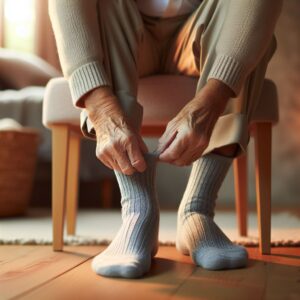
Grip and Traction
Check the pattern and material of the grip. High-quality non-slip socks will have a durable, well-distributed grip pattern that covers the entire sole. The grip should be strong enough to provide stability but flexible enough to allow natural movement. Some socks have additional grip on the heels and toes for extra support.
Style and Design
Non-slip socks come in various styles and designs, from plain colors to fun patterns. Choosing a style that the elderly individual likes can encourage them to wear the socks regularly. Some socks also have additional features, such as padded soles for extra comfort or reinforced seams for durability.
Additional Fall Prevention Tips
Home Modifications
- Remove Clutter: Keep walkways clear of obstacles. Ensure that floors are free from loose rugs, cords, and other items that could cause tripping.
- Install Handrails: Place handrails in key areas such as staircases and bathrooms. Handrails provide support and stability, making it easier for the elderly to navigate these areas safely.
- Improve Lighting: Ensure all areas are well-lit to prevent tripping over unseen objects. Use nightlights in hallways and bathrooms to provide visibility during nighttime.

Physical Activity
Encourage regular exercise to improve strength, balance, and coordination. Activities such as walking, tai chi, and gentle yoga can be beneficial. Exercise not only helps to strengthen muscles but also improves flexibility and balance, reducing the risk of falls.
Regular Health Check-Ups
Regular visits to the doctor can help identify and address health issues that may contribute to falls, such as vision problems or medication side effects. Eye exams can ensure that vision is clear, while medication reviews can identify drugs that may cause dizziness or balance issues.
Footwear Choices
In addition to non-slip socks, choosing the right footwear is crucial for fall prevention. Shoes should have non-slip soles, provide adequate support, and fit well. Avoid high heels and shoes with slippery soles. Consider using orthotic inserts for additional support and comfort.
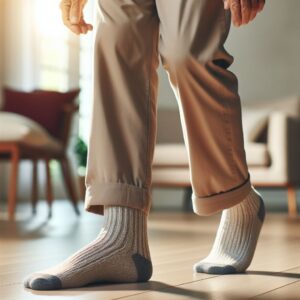
Assistive Devices
For those with significant mobility issues, assistive devices such as walkers, canes, and grab bars can provide additional support. These devices can help the elderly move around safely and confidently.
Education and Awareness
Educating the elderly and their caregivers about fall prevention strategies is essential. Workshops, seminars, and informational materials can provide valuable insights and practical tips for reducing the risk of falls.
Conclusion
Non-slip socks are a simple yet effective tool in the fight against falls among the elderly. By providing better grip and stability, these socks can help older adults maintain their independence and reduce the risk of injury. Combined with other fall prevention strategies, non-slip socks can make a significant difference in the safety and well-being of elderly individuals. Investing in non-slip socks and implementing comprehensive fall prevention measures can lead to a safer, healthier, and more fulfilling life for our elderly loved ones.
